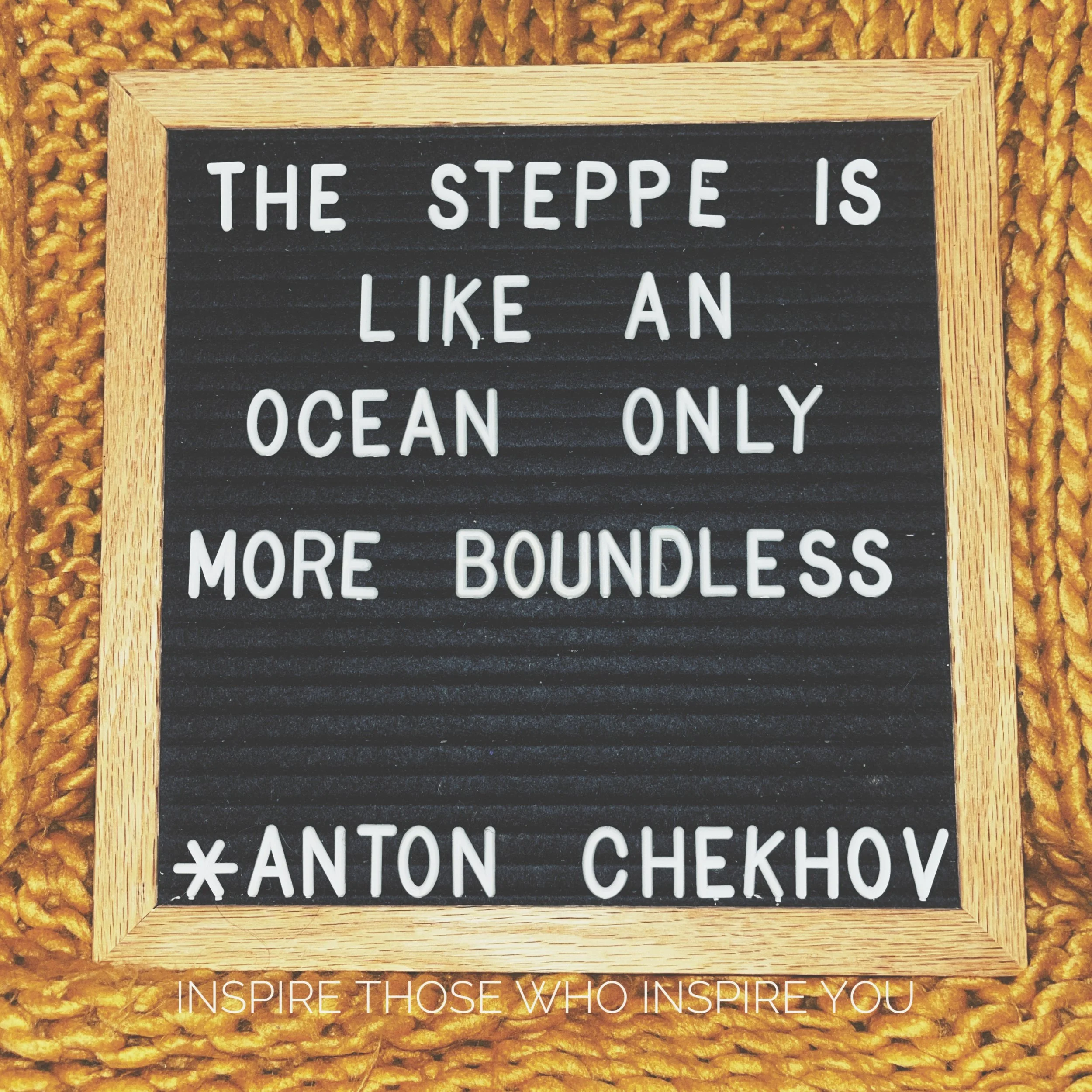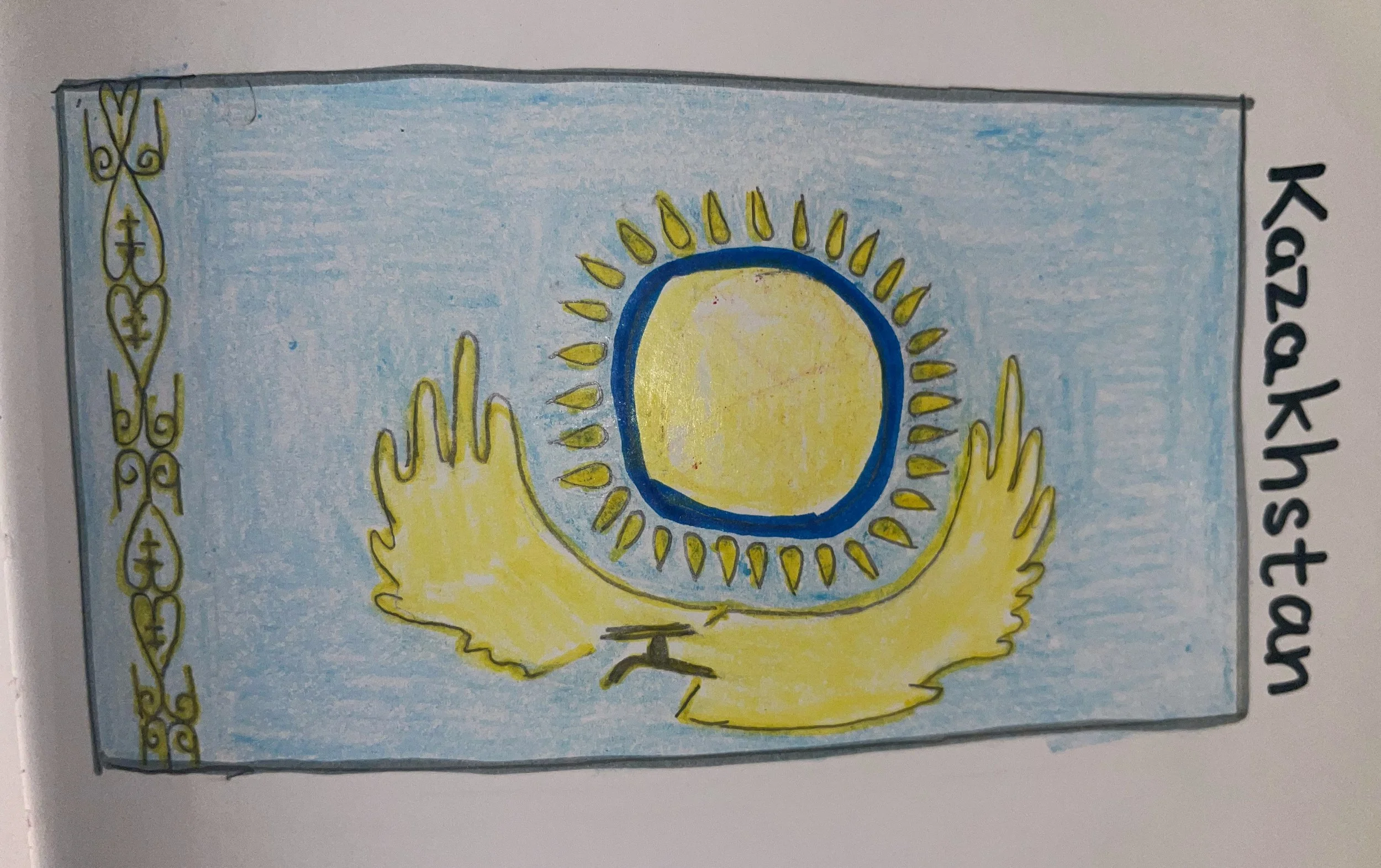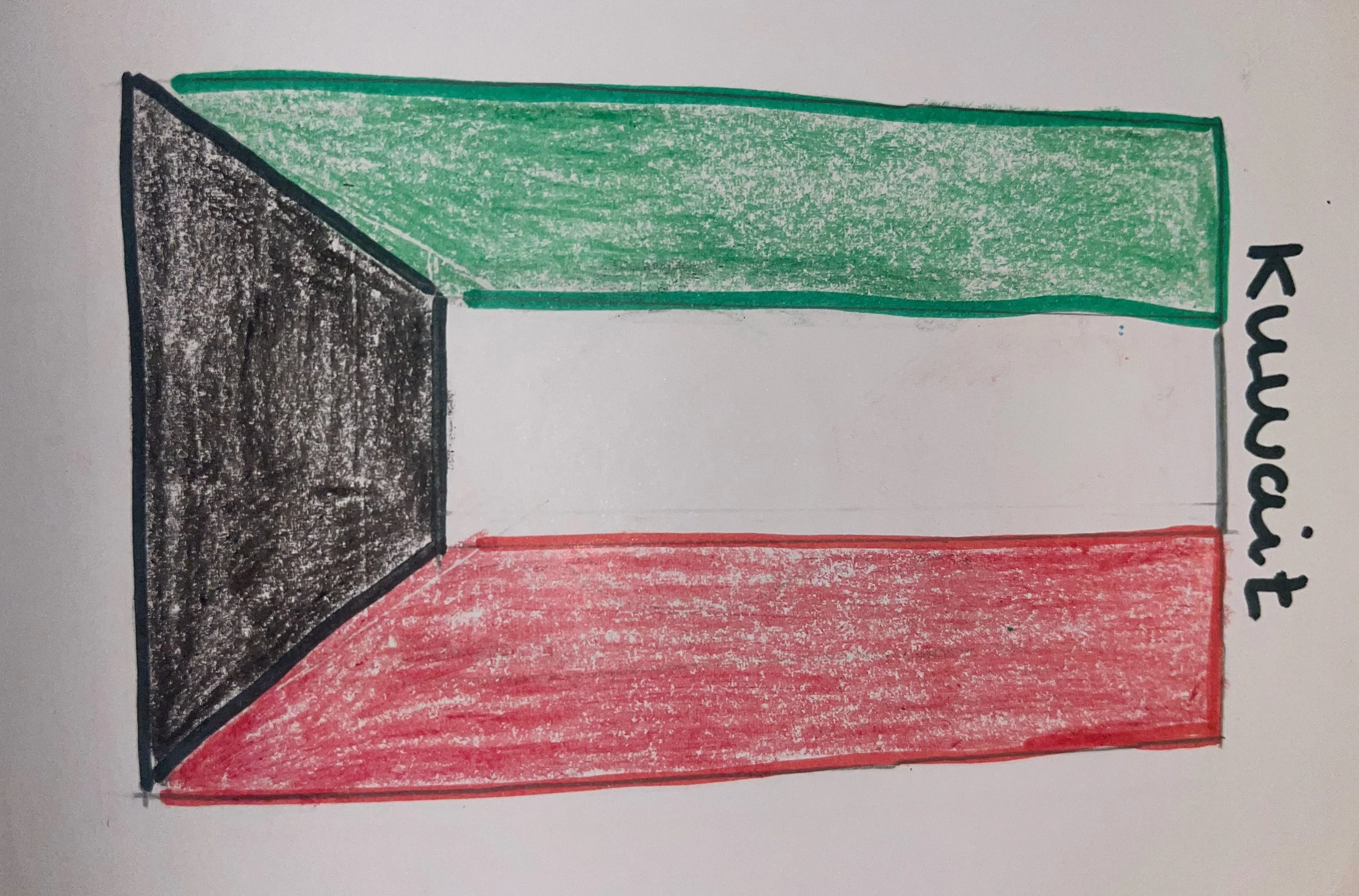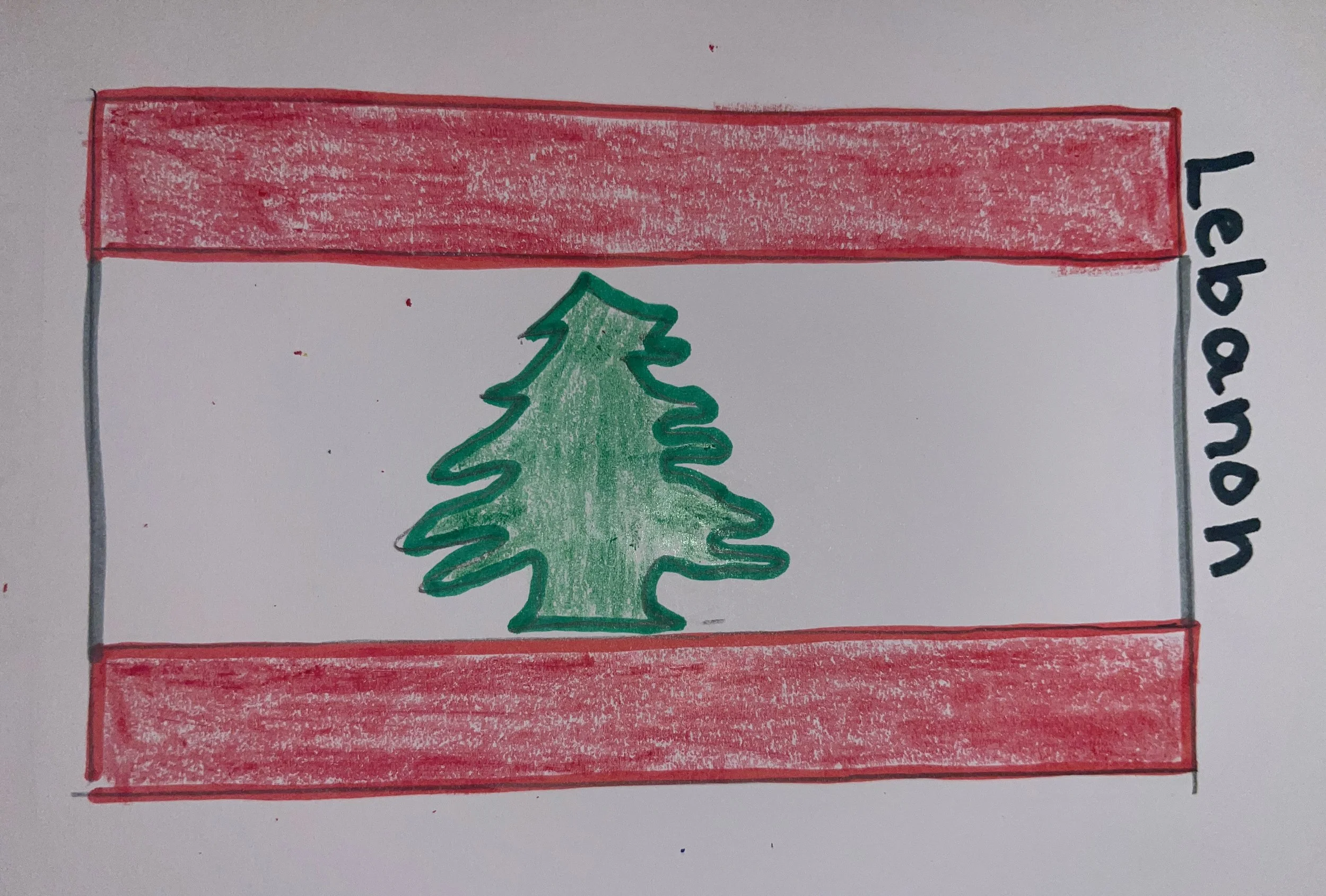Steppes to Skyscrapers
Anton Checkhow quote “The steppe is like an ocean only more boundless,” on a letter board in front of a dandelion-knit blanket.
Editor’s note: This post will continue to evolve as I do.
Welcome insightful souls, and curious minds, both new and returning, to another chapter of Around the World series. This ongoing journey explores every country, six at a time, offering a chance to slow down, learn, and see the world through wider eyes. It’s not about ticking places off a list, it’s about recognizing the stories, names, and people that give each place its depth.
This chapter, “Steppes to Skyscrapers,” bridges the nomadic past and the modern pulse where open horizons meet rising skylines. From Kazakhstan, Kuwait, Kyrgyzstan, Laos, Lebanon, and Malaysia, each nation shows how tradition and innovation can coexist, not in competition, but in balance.
So fasten your seatbelts and open your perspective, today we travel from Kazakhstan to Malaysia, discovering how these six nations shape, preserve, and redefine what “home” looks like.
My hand-drawn flag of Kazakhstan
KAZAKHSTAN
Official name: the Republic of Kazakhstan
Pronunciation: kaa-zuhk-staan
Capital: Astana
Official language: Kazakh and Russian
Location: In Central Asia in the Northern Hemisphere
Surrounding countries: Russia, China, Kyrgyzstan, Uzbekistan, and Turkmenistan
Most known for: Baikonur Cosmodrome is the world’s first and largest operating space launch facility. For more information, read Britannia’s Baikonur Cosmodrome’s page here.
Fun fact: World’s largest landlocked country
Recent news article: Kazakhstan at 35: Art of Middle Power in New Geopolitical Reality (Glenn Agung Hole, 2025)
My knowledge: Currently learning more than I knew
My hand-drawn flag of Kuwait
KUWAIT
Official name: the State of Kuwait
Pronunciation: koo-ayt
Capital: Kuwait City
Official language: Arabic
Location: In Western Asia/Middle East (part of MENA) within the Northern Hemisphere
Surrounding countries: Saudi Arabia, Iraq, and Iran
Most known for: It’s oil reserves making it one of the wealthiest countries in the world
Fun fact: The Kuwaiti Dinar is cited as the world’s highest valued currency unit
Recent news article: Updated Kuwait Traffic Laws in 2025: What Every Traveller Needs to Know Before Hitting the Road (Travel and World Tour, 2025)
My knowledge: Not a whole lot
My hand-drawn flag of Kyrgyzstan
KYRGYZSTAN
Official name: Kyrgyz Republic
Pronunciation: keer-guh-staan
Capital: Bishkek
Official language: Kyrgyz and Russian
Location: In Central Asia in the Northern Hemisphere
Surrounding countries: Tajikistan, Uzbekistan, Kazakhstan, and China
Most known for: It’s stunning mountains, such as Tien Shan and Pamir-Alay ranges. Here is Britannica’s Tien Shan, for more information and Kyrgyz Tourism of Pamir-Alay ranges, see here
Fun fact: Home to the largest walnut forest in the world
Recent news article: Kyrgyzstan Adopts Snow Leopard as National Symbol, Unveils Official Logo (Sergey Kwan, 2025)
My knowledge: I’m not familiar with Kyrgyzstan
My hand-drawn flag of Laos
LAOS
Official name: Lao’s People Democratic Republic (Lao PDR)
Pronunciation: lows
Capital: Vientiane
Official language: Lao
Location: Southeastern country in Asia in the Northern Hemisphere
Surrounding countries: Vietnam, Cambodia, Thailand, Myanmar, and China
Most known for: Rich cultural heritage of Buddhist traditions
Fun fact: Nicknamed “Land of a Million Elephants” due to its historical name of Lan Xang translating to that phrase. For more information, check out Luang Prabang Culture’s “The Land of a Million Elephants”
Recent news article: Lighted boat festivals glow across Laos, with Luang Prabang shining brightest (The Nation, 2025)
My knowledge: Not too familiar with Laos
My hand-drawn flag of Lebanon
LEBANON
Official name: the Lebanese Republic
Pronunciation: LEB-uh-non
Capital: Beirut
Official language: Arabic
Location: In Western Asia as well as in the Middle East (part of MENA) in the Northern Hemisphere
Surrounding countries: Syria, Jordan, Israel, and Palestine
Most known for: Ancient history and cultural heritage, such as the “Land of the Cedars.” Cedar trees are a national symbol. For a better explanation, read Life in the Holy Land’s “Cedars of Lebanon”
Fun fact: Only flag in the world to feature a tree
Recent news article: Lebanon’s tourism hopes rise as ties with Arab Gulf states warm (Nadia Al-Faour, 2025)
My knowledge: More so, from the unfortunate world news of the Beirut explosion
My hand-drawn flag of Malaysia
MALAYSIA
Official name: Malaysia (In Malay, it would be Persekutuan Malaysia which translated to Federation of Malaysia)
Pronunciation: muh-lay-zhuh
Capital: Kuala Lumpur
Official language: Malay
Location: Southeastern island country slightly above the equator in the Northern Hemisphere
Surrounding countries: Brunei and Indonesia
Most known for: It’s iconic landmarks, such as the Petronas Towers. To read more, check out EBSCO’s “Petronas Towers” page here.
Fun fact: Has the world’s largest cave chamber known as the Sarawak Chamber. For more information, check out TimesTravel article, here.
Recent news article: Good News For Retailers: Malaysia is the Happiest Asian Country (Ross O’Brien, 2025)
My knowledge: I am only a little familiar with Malaysia
From Kazakhstan’s endless grasslands to Malaysia’s glittering skylines, this chapter reminded me that progress and preservation aren’t opposites, they’re partners in the same story. These nations prove that identity can evolve without erasing its origins, that even among glass towers and highways, the echo of the steppe still hums beneath it all.
If there’s a lesson here, it’s this: Travel isn’t only about movement, it’s about noticing that endures when everything else changes. The skyline might rise, the rhythm might shift, but culture, when honored, finds a way to breathe through it.
So, as Around the World continues, I hope “Steppes to Skyscrapers” inspires you to see both the old and the new with equal wonder. The modern city and the ancient trail both tell the same truth, that every place, like every person, is a work in progress.
I’d love to hear from you: If you’ve lived in, visited, or have roots in any of these countries, what moment or memory stands out to you most?
And if you’re new to this journey, welcome abroad. More stories, more lessons, and more horizons await. But if you want to start from the beginning, click here.
As a signature of my blog, I’d like to end this post with a suggestion to “Pass on kindness.” There’s no time like the present to Inspire Those Who Inspire You. Acts of kindness, no matter how big or small, can have a direct, positive impact on someone else. Go out there today and change someone’s life for the better!
***These are my personal opinions and may not be those of my employer.***










